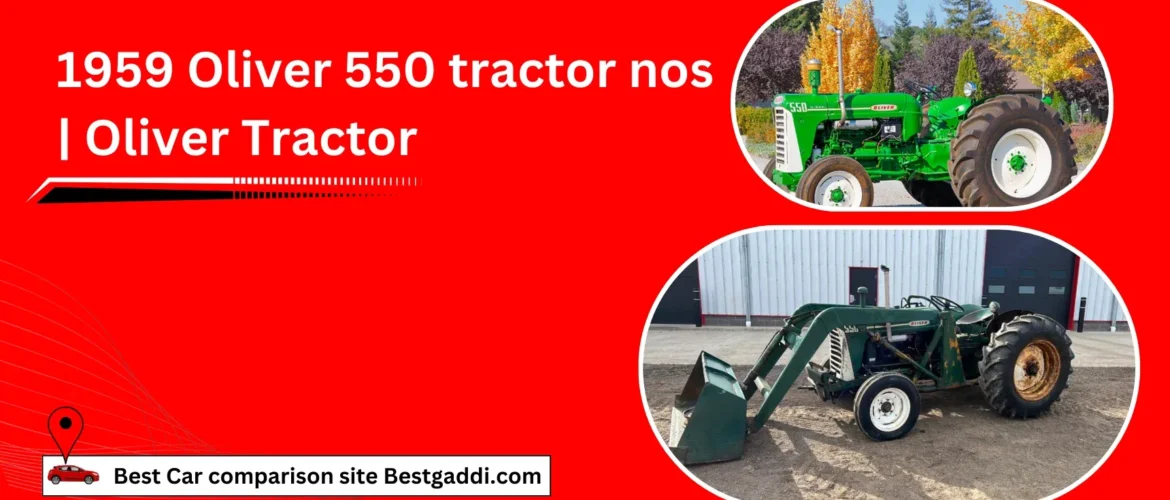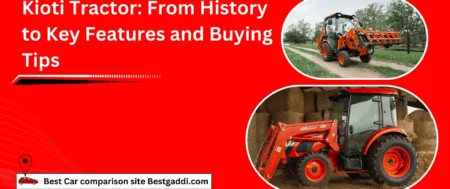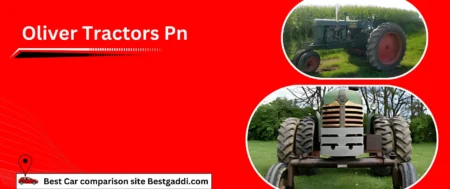Discover the Classic Charm of the 1959 Oliver 550 Tractor Nos! The 1959 Oliver 550 Tractor Nos offers unmatched durability, classic design, and a powerful performance.
Table of Contents
Introduction
If you’re a vintage tractor enthusiast or a collector, the 1959 Oliver 550 Tractor Nos is a model that’s likely on your radar. This classic machine is renowned for its durability and historic significance. In this guide, we’ll delve into the details of the 1959 Oliver 550, exploring its history, features, and why it continues to captivate collectors and farmers alike.
The 1959 Oliver 550 Tractor nos: An Overview
The 1959 Oliver 550 is a part of Oliver’s famed 500 series, a line celebrated for its robust design and reliable performance. This tractor was built during a transformative period in agricultural machinery, reflecting both the technological advancements of its time and the timeless charm of classic farm equipment.
Historical Background
Oliver Tractor Company, founded in 1929, quickly made a name for itself with its innovative designs and commitment to quality. By 1959, Oliver was producing some of the most advanced and durable tractors on the market. The 1959 Oliver 550 represents the pinnacle of Oliver’s engineering during this era, combining tradition with technological progress.
Key Features of the 1959 Oliver 550
The 1959 Oliver 550 comes with a range of features that set it apart from its peers. Key attributes include:
- Engine Power: A reliable engine that offers robust performance for its time.
- Transmission: Known for smooth shifting and durability.
- Build Quality: Heavy-duty construction that ensures longevity.
Engine Specifications
The heart of the 1959 Oliver 550 is its engine. Here’s a closer look at what makes this engine noteworthy:
- Engine Type: The tractor is equipped with a 4-cylinder engine.
- Displacement: Approximately 2.7 liters.
- Horsepower: Around 45-50 HP, depending on the specific model and configuration.
- Cooling System: The engine uses a liquid cooling system to maintain optimal operating temperatures.
Transmission and Performance
One of the standout features of the 1959 Oliver 550 is its transmission system. It boasts:
- Gearbox: A 5-speed manual transmission, providing versatility and control.
- Performance: Capable of handling a variety of tasks from plowing to hauling with ease.
- Drive System: Reliable and efficient, with a proven track record in both fieldwork and transportation.
Design and Build Quality
The design of the 1959 Oliver 550 is both functional and aesthetically pleasing. Highlights include:
- Durability: Built with high-quality materials to withstand tough conditions.
- Ergonomics: Designed with the operator’s comfort in mind, including a spacious and accessible control panel.
- Aesthetics: Classic lines and a robust stance that exude the charm of mid-20th-century tractors.

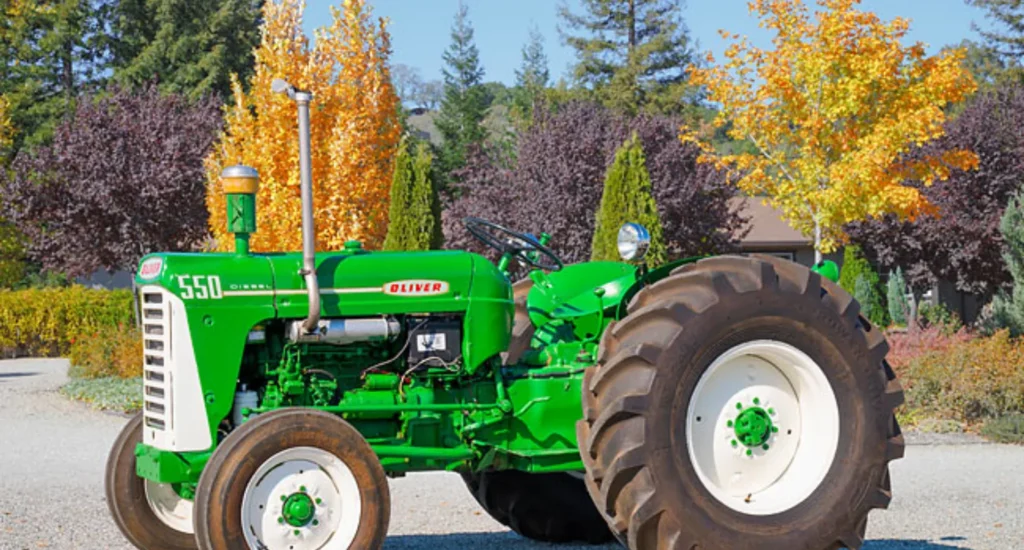
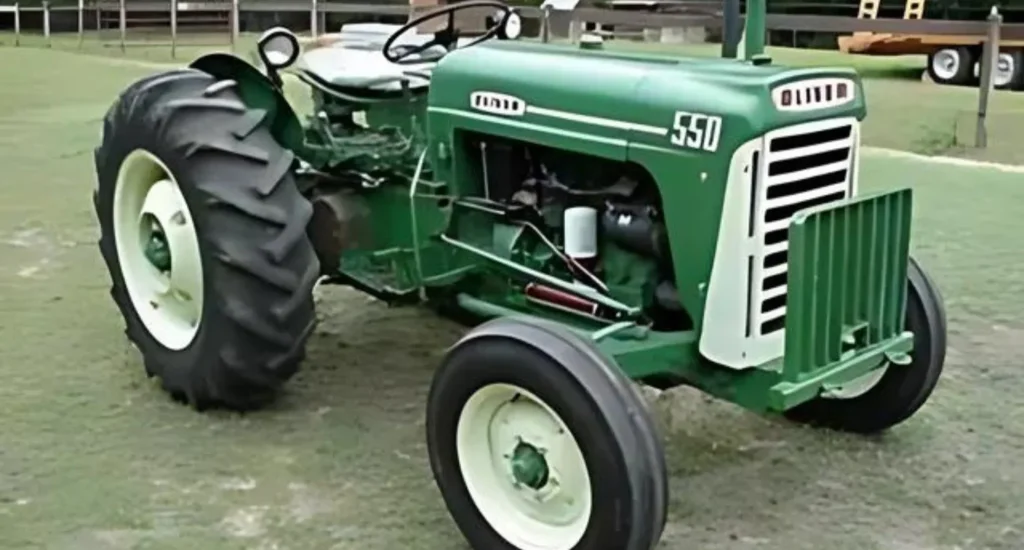
Innovations and Technology
The 1959 Oliver 550 incorporated several innovations for its time:
- Hydraulic System: Advanced hydraulic controls for improved implement handling.
- Electrical System: Upgraded electrical components for better reliability.
- Safety Features: Improved safety measures including better braking systems and enhanced operator visibility.
Market Value and Collectibility
The 1959 Oliver 550 is not just a piece of farming history; it’s also a sought-after collector’s item. Factors affecting its market value include:
- Condition: Well-maintained or restored models fetch higher prices.
- Originality: Tractors with original parts and paint are more valuable.
- Rarity: Limited availability can increase demand among collectors.
Restoration Tips for the 1959 Oliver 550
Restoring a 1959 Oliver 550 can be a rewarding project. Here are some tips to guide you:
- Start with a Thorough Inspection: Assess the condition of the engine, transmission, and body.
- Source Quality Parts: Look for original or high-quality replacement parts.
- Professional Help: Consult with specialists if needed for complex repairs or restorations.
Maintenance Guidelines
Maintaining a 1959 Oliver 550 ensures its longevity and performance. Follow these guidelines:
- Regular Oil Changes: Keep the engine lubricated and in good condition.
- Check Fluid Levels: Regularly monitor coolant, hydraulic fluid, and transmission fluid levels.
- Inspect Tires and Brakes: Ensure they are in good working order to maintain safety and performance.
Common Issues and Solutions
Here are some common issues with the 1959 Oliver 550 and their solutions:
- Engine Overheating: Check the cooling system and radiator for blockages.
- Transmission Problems: Regular maintenance and fluid checks can prevent issues.
- Electrical Failures: Inspect wiring and connections regularly.
Comparing the Oliver 550 with Other Tractors
How does the 1959 Oliver 550 stack up against its contemporaries?
- John Deere 420: Known for similar performance but with different design features.
- Farmall 350: Offers comparable power but may lack some of the Oliver’s advanced features.
The 1959 Oliver 550 in Modern Farming
While it’s a classic, the 1959 Oliver 550 can still be useful in modern farming:
- Light Work: Ideal for lighter tasks and vintage farming demonstrations.
- Collector’s Item: Often featured in vintage machinery shows and events.
Finding Replacement Parts
Finding parts for a classic tractor can be challenging. Here’s where to look:
- Specialty Dealers: Look for dealers specializing in vintage farm equipment.
- Online Marketplaces: Websites like eBay and specialized tractor parts suppliers.
- Restoration Shops: Local shops that handle vintage machinery.
Where to Buy a 1959 Oliver 550
If you’re looking to purchase a 1959 Oliver 550, consider these options:
- Auction Sites: Online auctions can offer well-maintained models.
- Farm Equipment Dealers: Some dealers specialize in vintage tractors.
- Collector’s Clubs: Join clubs and forums where members buy and sell classic tractors.
Community and Clubs for Enthusiasts
Engaging with other enthusiasts can be a great way to share knowledge and resources:
- Online Forums: Join forums dedicated to vintage tractors.
- Local Clubs: Participate in local vintage machinery clubs and events.
Stories from Owners
Owners of the 1959 Oliver 550 often have unique stories to share:
- Family Farms: Many have used these tractors on family farms for decades.
- Restoration Projects: Enthusiasts often share their restoration journeys and tips.
Conclusion
The 1959 Oliver 550 Tractor Nos is more than just a piece of equipment; it’s a symbol of agricultural history and innovation. Whether you’re a collector, a restorer, or just an admirer of vintage machinery, this tractor holds a special place in the hearts of many. Its blend of historical significance, robust performance, and timeless design ensures that the 1959 Oliver 550 continues to be cherished and celebrated.
FAQs
What is the horsepower of the 1959 Oliver 550?
The 1959 Oliver 550 typically offers around 45-50 horsepower.
Where can I find parts for the 1959 Oliver 550?
Parts can be found through specialty dealers, online marketplaces, and vintage machinery shops.
How can I restore a 1959 Oliver 550?
Start with a thorough inspection, source quality parts, and consult restoration experts if necessary.
Is the 1959 Oliver 550 suitable for modern farming?
It’s best for light work and vintage demonstrations but still holds value in modern settings.
What are common issues with the 1959 Oliver 550?
Common issues include engine overheating, transmission problems, and electrical failures.
How does the Oliver 550 compare to other tractors of its time?
It offers comparable performance with unique features that set it apart from rivals like the John Deere 420.
What should I check during regular maintenance of the 1959 Oliver 550?
Regularly check oil levels, fluid levels, tires, and brakes.
Where can I buy a 1959 Oliver 550?
Look at auction sites, farm equipment dealers, and collector’s clubs.
Are there any clubs for 1959 Oliver 550 enthusiasts?
Yes, there are online forums and local clubs dedicated to vintage tractor enthusiasts.
What makes the 1959 Oliver 550 a valuable collector’s item?
Its historical significance, unique features, and limited availability increase its value among collectors.
